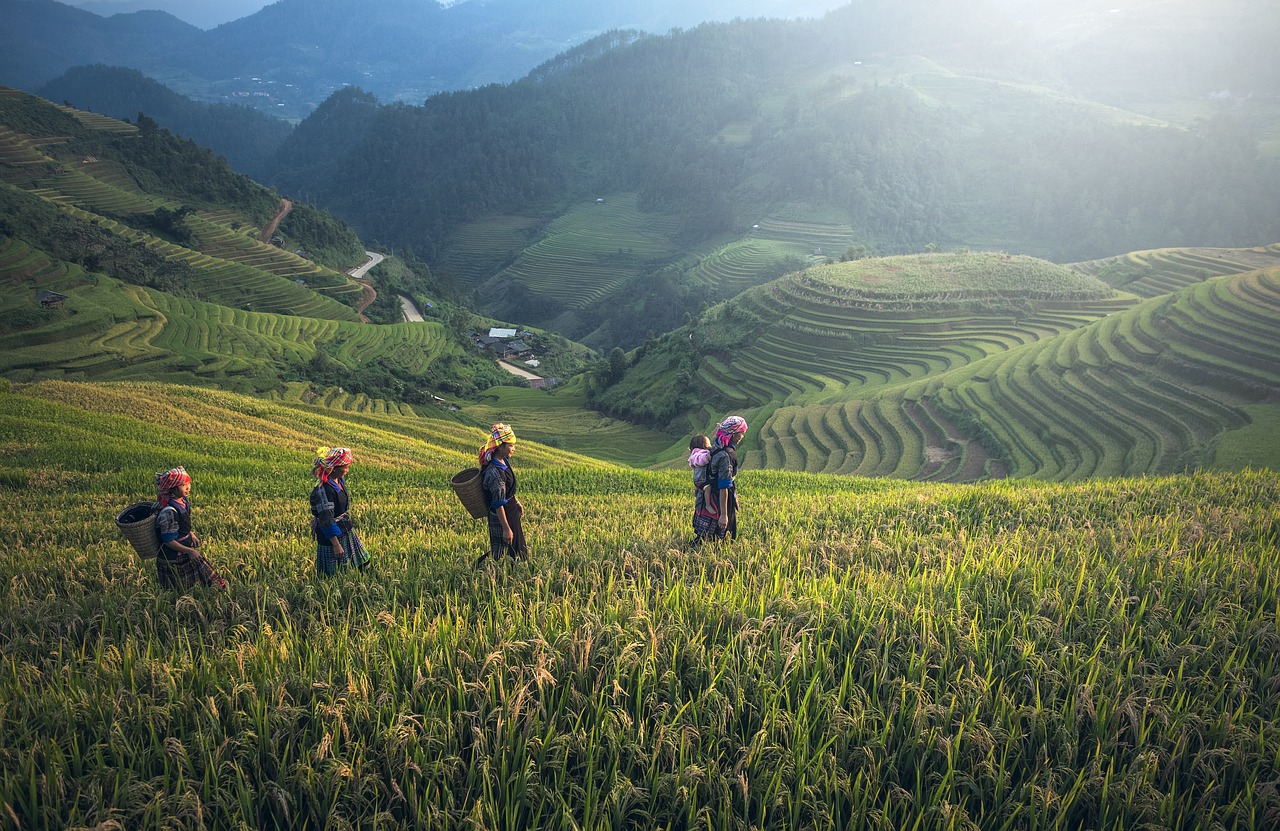The Most Neglected Threat to Public Health in China Is Toxic Soil
Published: June 8, 2017
Tang Donghua, a wiry 47-year-old farmer wearing a Greenpeace T-shirt, smokes a cigarette and gesticulates towards his paddy fields in the hills of southern Hunan province. The leaves of his rice plants poke about a foot above water. Mr Tang says he expects to harvest about one tonne of rice from his plot of a third of a hectare (0.8 acres) near the small village of Shiqiao. There is just one problem: the crop will be poisoned.
Egrets and damselflies chomp lazily on fish and insects in the humid valley below the paddy fields. But just beyond this rural scene lurks something discordant. Mr Tang points to a chimney around 2km away that belches forth white smoke. It belongs to the smelting plant which he blames for bringing pollution into the valley. Cadmium is released during the smelting of ores of iron, lead and copper. It is a heavy metal. If ingested, the liver and kidneys cannot get rid of it from the body, so it accumulates, causing joint and bone disease and, sometimes, cancer.
Hunan province is the country’s largest producer of rice—and of cadmium. The local environmental-protection agency took samples of Mr Tang’s rice this year and found it contained 50% more cadmium than allowed under Chinese law (whose limits are close to international norms). Yet there are no limits on planting rice in polluted areas in the region, so Mr Tang and his neighbours sell their tainted rice to the local milling company which distributes it throughout southern China. Mr Tang has sued the smelter for polluting his land—a brave act in China, where courts regularly rule in favour of well-connected businesses. His is an extreme case of soil contamination, one of the largest and most neglected problems in the country.
Soil contamination occurs in most countries with a lot of farmland, heavy industry and mining. In Ukraine, for example, which has all three, about 8% of the land is contaminated. A chemical dump in upstate New York called Love Canal resulted in the poisoning of many residents and the creation of the “superfund”, a federal programme to clean up contaminated soil. But the biggest problems occur in China, the world’s largest producer of food and of heavy industrial commodities such as steel and cement.
China’s smog is notorious. Its concentrations of pollutants—ten or more times the World Health Organisation’s maximum safe level—have put clean air high on the political agenda and led the government to curtail the production and use of coal. Water pollution does not spark as much popular outrage but commands the attention of elites. Wen Jiabao, a former prime minister, once said that water problems threaten “the very survival of the Chinese nation”. China has a vast scheme to divert water from its damp southern provinces to the arid north.
Dishing the dirt
Soil pollution, in contrast, is buried: a poisoned field can look as green and fertile as a healthy one. It is also intractable. With enough effort, it is possible to reduce air or water pollution, though it may take years or decades. By contrast, toxins remain in the soil for centuries, and are hugely expensive to eradicate. It took 21 years and the removal of 1,200 cubic metres of soil to clean up the Love Canal, a site covering just 6.5 hectares.
China’s soil contamination is so great that it cannot adopt such a course (see map). The country is unusual in that it not only has many brownfield sites (contaminated areas near cities that were once used for industry) but large amounts of polluted farmland, too. In 2014 the government published a national soil survey which showed that 16.1% of all soil and 19.4% of farmland was contaminated by organic and inorganic chemical pollutants and by metals such as lead, cadmium and arsenic. That amounts to roughly 250,000 square kilometres of contaminated soil, equivalent to the arable farmland of Mexico. Cadmium and arsenic were found in 40% of the affected land. Officials say that 35,000 square kilometres of farmland is so polluted that no agriculture should be allowed on it at all.
Stick in the mud
This survey is controversial. Carried out in 2005-13, it was at first classified as a state secret, leading environmentalists to fear that the contamination might be even worse than the government let on. Not everyone, however, is as pessimistic. Chen Tongbin, head of the Institute of Geographic Sciences and Natural Resources Research in Beijing, thinks the figure of 19.4% is too high. Based on local studies, he says 10% is nearer the mark. Even that would be a worrying figure, given that China is trying to feed a fifth of the world’s population on a tenth of the world’s arable land. The conclusion seems to be that China’s soil pollution is widespread and that information about it is disturbingly unreliable.
There are three reasons why the contamination is so extensive. First, China’s chemical and fertiliser industries were poorly regulated for decades and the soil still stores the waste that was dumped on it for so many years. In 2015, for example, 10,000 tonnes of toxic waste was discovered under a pig farm in Jiangsu province in the east of China after a businessman proposed plans to build a warehouse on the plot and tested the soil. In 2004 construction workers on the Beijing metro suddenly fell ill when they started tunnelling under a site previously occupied by a pesticide factory.

